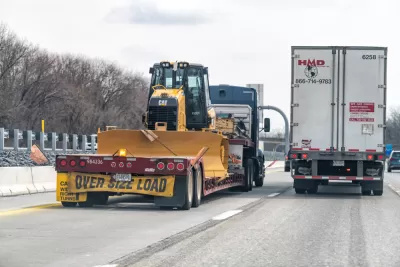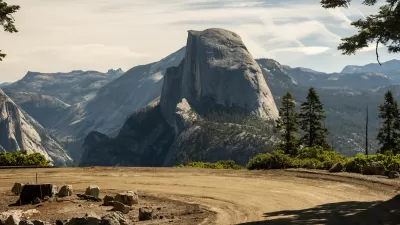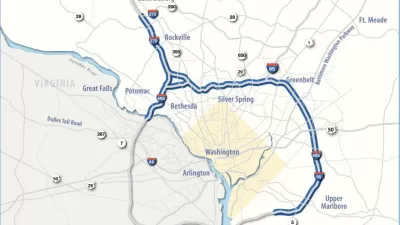Despite the narrative about infrastructure spending priorities shifting toward emissions-reducing investments in the American Jobs Plan, the car-centric status quo expects more of the same.

If you've been reading the news and commentary about the American Jobs Plan proposed by the Biden administration at the end of March, you wouldn't be wrong to expect big benefits for renewable energy, public transit, and other, investments that reflect a more expansive concept of infrastructure.
According to an article by Michael Gorsegner, reporting for CBS 21 in Pennsylvania, representatives for the Pennsylvania Department of Transportation see the American Jobs Plan as good news for the state's roads.
"Pennsylvania may see an influx of cash to fix its crumbling road network," writes Gorsegner. That assessment is echoed by the comments of Chris Drda, acting District 8 executive for PennDOT, who is quoted in the article saying that the jobs plan is great news for the transportation industry in Pennsylvania. One project mentioned in the article as a potential recipient of American Jobs Plan funding is a proposal to widen a 100-mile stretch of Interstate 81 from the Maryland state line to Interstate 78 at cost of $3 billion.
The article also mentioned a plan to add an interchange to Interstate 83 in York County as a potential recipient of funding. That plan is moving forward, according to Gorsegner, with or without new funding from the Biden jobs plan.
FULL STORY: Transportation experts eye cash influx with Presidential plan

Study: Maui’s Plan to Convert Vacation Rentals to Long-Term Housing Could Cause Nearly $1 Billion Economic Loss
The plan would reduce visitor accommodation by 25,% resulting in 1,900 jobs lost.

North Texas Transit Leaders Tout Benefits of TOD for Growing Region
At a summit focused on transit-oriented development, policymakers discussed how North Texas’ expanded light rail system can serve as a tool for economic growth.

Using Old Oil and Gas Wells for Green Energy Storage
Penn State researchers have found that repurposing abandoned oil and gas wells for geothermal-assisted compressed-air energy storage can boost efficiency, reduce environmental risks, and support clean energy and job transitions.

From Blight to Benefit: Early Results From California’s Equitable Cleanup Program
The Equitable Community Revitalization Grant (ECRG) program is reshaping brownfield redevelopment by prioritizing projects in low-income and environmental justice communities, emphasizing equity, transparency, and community benefits.

Planting Relief: Tackling Las Vegas Heat One Tree at a Time
Nevada Plants, a Las Vegas-based nonprofit, is combating the city’s extreme urban heat by giving away trees to residents in underserved neighborhoods, promoting shade, sustainability, and community health.

How Madison’s Tree Planting Efforts Are Growing a Healthier Community
Madison’s annual tree planting initiative is enhancing environmental resilience, public health, and community livability by adding 1,400 carefully selected trees citywide, with strong community and institutional support for urban forestry.
Urban Design for Planners 1: Software Tools
This six-course series explores essential urban design concepts using open source software and equips planners with the tools they need to participate fully in the urban design process.
Planning for Universal Design
Learn the tools for implementing Universal Design in planning regulations.
Ascent Environmental
Borough of Carlisle
Institute for Housing and Urban Development Studies (IHS)
City of Grandview
Harvard GSD Executive Education
Toledo-Lucas County Plan Commissions
Salt Lake City
NYU Wagner Graduate School of Public Service





























